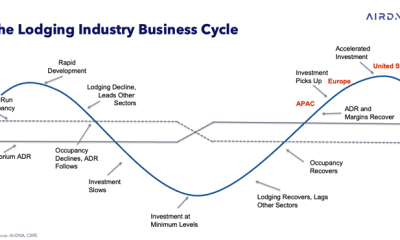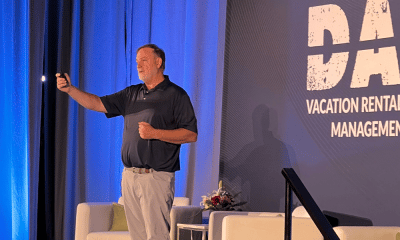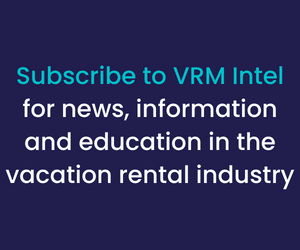
It goes without saying that today’s workforce expects something different than before. Both job seekers and employees are reassessing their employment, becoming more selective about where and how the work gets done and who they choose to work for. Over the past two years, we have survived the ups and downs of the workforce during the pandemic. As we come out of the pandemic, it is important to understand how the resignation tsunami and the great renegotiation affect your ability to attract and retain your employees.
The Resignation Tsunami

Employees choose to leave their jobs for many reasons. Since the start of the COVID-19 pandemic, people have prioritized their mental health and well-being and are seeking flexible working accommodations. They are not ready to return to the old ways of working, despite what employers plan to do. People want flexible hours, better work cultures, opportunities for growth, and, it goes without saying, more competitive compensation and benefits. People’s perspectives of how they value their time and what is most meaningful have shifted.
Burnout is another reason people are choosing to leave their jobs. Findings from the Workhuman IQ Fall 2021 Survey report that 64 percent of respondents feel overworked and exhausted, with 41 percent of that group reporting burnout has continued to occur during the past few months. Employees today are significantly more exhausted than they were pre-pandemic in 2019, stating work is too intense with unsustainable expectations.
Working parents top the list of exhaustion and burnout. They continue to be the most stressed demographic, given the disruption to school and childcare. Many working parents lacked the support they wanted from their employers and left the workforce. A recent survey from the Maven Clinic shared that the resignation tsunami is not over for this demographic and that 64 percent of working parents are planning to leave their jobs.
The Great Renegotiation
The balance of power has shifted from employers to employees. Employees now have the power to renegotiate the terms of their employment. Recently, the Harvard Business Review reported that the workforce has added 48 minutes to their workday and increased the number of meetings by 24 percent and that 70 percent of employees claim to work on weekends. As employees renegotiate their employment, employers are learning that more flexible time is as equitable as higher compensation.
Employees want reduced workweeks—not overtime—and extended on-call time. They want flexibility in managing their time and where they work. Employees want more autonomy and less oversight. Although not all positions can be done remotely, many positions can be done remotely or as a hybrid blend of remote and office work.
Remote work has become the new norm, opening the door for employees to live where they want and choose how and when they work. Therefore, acknowledging that remote work is a large part of your ongoing talent strategy is critical.
The resignation tsunami and the great renegotiation are prompting employers to think differently about how they attract and retain talent. With multigenerational workers and geographical differences, employers need to actively rethink their employee value proposition and what is most important to potential employees. Listed below are five strategies you can deploy now to ensure you have the workforce you need.
1. Strengthen your employee value proposition.
Employees today are seeking a healthy workplace culture where they are treated with dignity, fairness, and transparency. Be clear about what your company has to offer employees in return for the skills, capabilities, experiences, and contributions they bring to the table with a focus on what’s important to them.
An employee value proposition focuses on both monetary and nonmonetary benefits you provide to employees. Think about it as your brand. Company culture and employee experience are equally important and should be the essence of your employee value proposition. Focus on the value you place on your employees’ time, flexibility, and autonomy and then the monetary benefits. Strengthening your employee value proposition with nonmonetary benefits is key to attracting and retaining your workforce.
2. Determine the right staffing mix for your business.
What worked in the past may not be what works today. Companies meet business needs today by utilizing a mix of employees, staffing agencies, subcontractors, and independent contractors. Having more than one employment pool to tap into is a competitive advantage.
Redefine your positions by where and how the work gets done. Consider what work needs to be done on-site, what responsibilities and tasks can be completed remotely, and how you can introduce hybrid work that gives employees the flexibility to work from home and on-site. Remote work is here to stay and is a significant driver in an applicant’s decision to take a position.
3. Offer benefits and perks sooner.
Waiting 90 days to enroll employees in health-care plans or asking employees to wait a year to participate in your retirement savings plans is not competitive. Employees expect enrollment in health care and retirement savings plans immediately or as soon as possible, certainly within 30 days. Significant contributions (85 percent–100 percent) toward an employee’s health-care coverage are a differentiator. Likewise, employer contributions to employee retirement savings plans at 3 percent (regardless of the employee’s contribution) and immediate vesting in the employer contribution are the new baselines.
Provide new employees with paid time off and paid holidays from day one. Asking someone to wait 90 days to receive these benefits has gone by the wayside and is not competitive. Companies are also starting to provide paid holiday time to seasonal workers during the time they are employed.
Find ways to provide transportation perks. Some companies are providing transportation from outlying areas using shuttles and providing Wi-Fi. Others are providing mileage for commuting to and from work and, in some instances, are paying for commute time to expand their labor pool.
Consider offering employee assistance for childcare. Women are the largest demographic who left the workplace during the COVID-19 pandemic. Tap into this labor pool and find ways to assist them in returning to the workforce. Things such as remote work, childcare assistance, and schedule flexibility top the list.
Employees are seeking flexible schedules, the ability to work remotely, or the option to split time between an office and their remote location. Remote work or hybrid work is now one of the most sought-after perks, and you are at a disadvantage if you are not offering this flexibility.
4. Engage your management.
Managers have the greatest impact on your employee’s engagement and are responsible for 70 percent of their retention. Provide leadership training and opportunities for managers to grow, develop, and engage with their teams. Managers today must be clear and educate employees about the types of decisions they have the authority to make and what types of decisions they need to run up the flagpole.
Employees are tired of being micromanaged. They want greater autonomy with fewer layers of approvals. Decision-making guidelines are an excellent resource for managers and provide more autonomy for employees. Likewise, incorporating key performance indicators and metrics to measure performance and productivity is essential for managers to make the shift to managing outcomes, not tasks.
5. Develop the skills you can’t find.
The best employees are made, not found. Given the war for talent, you have to think differently about what the job is and who is going to fill it. Start by shifting your focus from hiring for the skills you need to thinking about how you can reskill and retrain your current workforce to meet future skills and capabilities. The value in reskilling employees far outweighs the cost. Retraining employees by investing in their development is the best way to bring more relevant skills to your business and retain your talent.
Companies failing to reinvent their approach to attracting and retaining talent risk turnover, vacancies, and lost opportunities, which negatively affect their bottom line. Ask yourself, “What is the single most important thing I can change today to ensure I attract and retain talent in the context of the current labor market?” Then go do it.
About Sue Jones
Sue Jones is the owner and founder of HR4VR, the vacation rental industry’s first and only dedicated human resources support services provider. With 30 years of experience in all facets of human resources and with businesses across multiple disciplines, Sue found her home in the vacation rental industry and is passionate about providing HR programs and services designed for the unique needs of property managers.
Sue is recognized for her many presentations at regional and national conferences and her regular contributions to VRM Intel, VRMA Arrival, and many other industry publications. The most rewarding part of Sue’s job is both reducing her client’s risk exposure and being their first call when the unavoidable HR catastrophe comes to pass. Sue is a veteran of the U.S. Navy, holds a Master’s Degree in Business Administration from Northeastern University, and is both a Senior Certified Professional with The Society for Human Resources Management (SHRM) and Senior Professional in Human Resources (SPHR) certified.
Jones will be speaking in 2022 at our VRM Intel Live! Branson, VRM Intel Live! Breckenridge, DARM 2022, VRM Intel Live! Tahoe, and VRM Intel Live! SWFL.












RSS